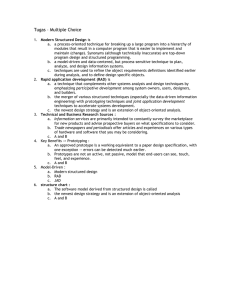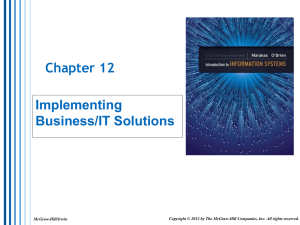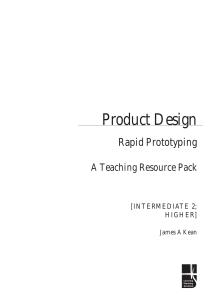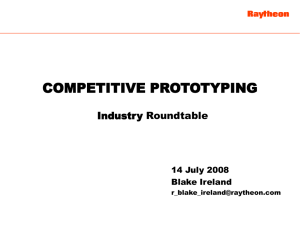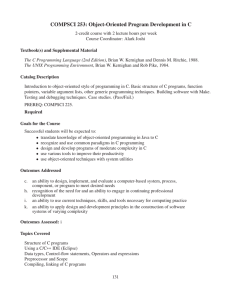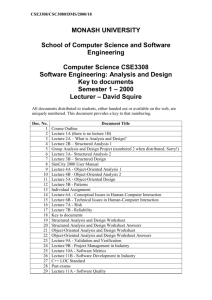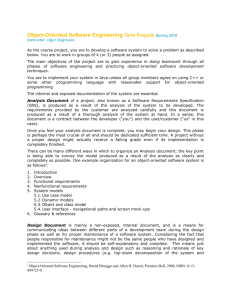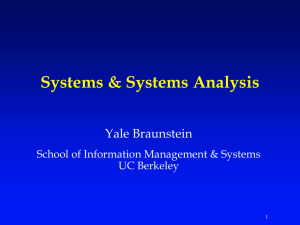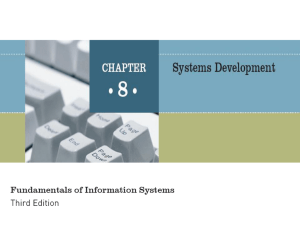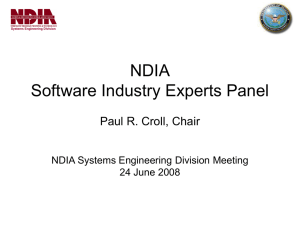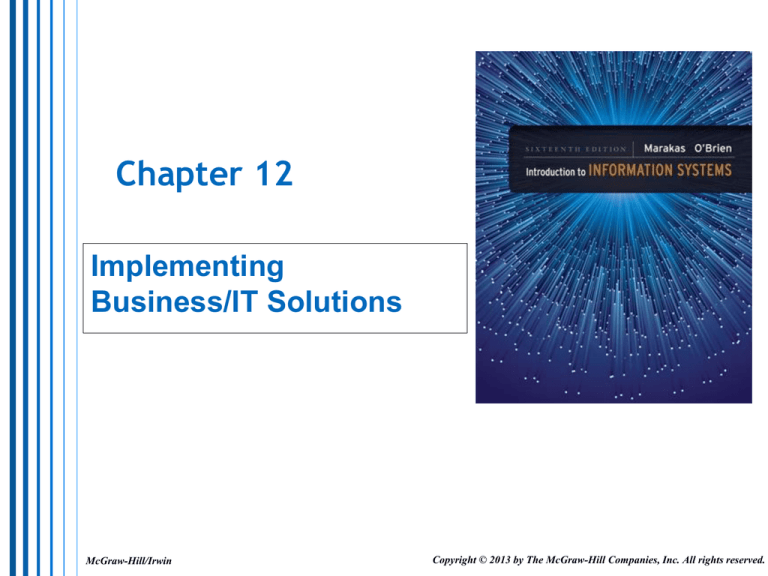
Chapter 12
Implementing
Business/IT Solutions
McGraw-Hill/Irwin
Copyright © 2013 by The McGraw-Hill Companies, Inc. All rights reserved.
Learning Objectives
Use the systems development process outlined
in this chapter and the model of IS
components from Chapter 1 as problem–
solving frameworks to help you propose
information systems solutions to simple
business problems.
Describe and give examples to illustrate how
you might use each of the steps of the
information systems development life cycle to
develop and implement a buiness information
system.
12-2
Learning Objectives
Explain how prototyping can be used as an
effective technique to improve the process of
systems development for end users and IS
specialists.
Understand the basics of project management
and its importance to a successful systems
development effort.
Identify the activities involved in the
implementation of new information systems.
12-3
Learning Objectives
Compare and Contrast the four basic
information system conversion strategies.
Describe several evaluation factors that should
be considered in evaluating the acquisition of
hardware, software, and IS services.
12-4
Section 1
Developing Business Systems
12-5
II. The Systems Approach
Uses a systems orientation to defining and solving
problems and opportunities
Problem Solving – there are specific steps in solving
any problem
Recognize/Define a Problem or Opportunity – recognize it
exists
Develop and Evaluate Alternative System Solutions – what are
the different ways to solve this problem?
Select the Best System Solution – decide which alternative is
best
Design the Selected System Solution – design the system for
the chosen solution
Implement and Evaluate the Success of the Designed System
– put the solution into effect and monitor results for the
outcome
12-6
IV. Starting the Systems Development
Process
The
Systems
Development
Life Cycle
12-7
V. Systems Analysis
• A detailed study of the current system and
organizational needs
• Organizational Analysis – you must have a thorough
understanding of the organization to make the system
work well
• Analysis of the Present System – “those who fail to
study history are doomed to repeat it”, a complete
understanding of the current system is critical
• Logical Analysis – create logical models the current
system, WHAT the system does without regard to
HOW
• Functional Requirements Analysis and Determination
– what Information is required for each business
activity and what Processing is required in the system
12-8
VI. Systems Design
• Create a new system to solve the
problem/opportunity
• Prototyping – create working models of the
proposed system
• The Prototyping Process – prototypes are
developed quickly for trial by users to obtain
user feedback
• User Interface Design – critical because the
interface is the part of the systems closest to
the user
• System Specifications – listing of elements that
formalize the design
12-9
VI. Systems Design
The Prototyping Process
12-10
VII. Technical Note: Overview of ObjectOriented Analysis and Design
Objects – anything a programmer wants to manage or
manipulate
Object-Oriented Programming (OOP)
Inheritance – ability to inherit properties of a higherorder object
Modularity – a series of interlinked yet stand-alone
modules
Polymorphism – different behavior based on conditions
Encapsulation – concealing all the properties inside the
object
Object-Oriented Analysis (OOA) – modeling the problem
domain as an object-oriented system
Object-Oriented Design (OOD) – create solutions using
objects
12-11
Section 2
Implementing Strategic Business Systems
12-12
III. Project Management
What Is a Project? – a set of activities with a
beginning and an end, has goals and tasks, may have
constraints (limitations)
The Process of Project Management – five phases:
Initiation and Defining – state the problem and identify
objectives and resources, explore costs/benefits
Planning – identify and sequence objectives/activities
Executing – put plans into motion
Controlling – ensure project objectives and deadlines
are met
Closing – install deliverables, release resources, end the
project
12-13
V. Other Implementation Activities
Testing – testing and debugging are important,
does the system work as it should?
Data Conversion – new implementations often
require replacing software and databases
Documentation – an important means of
communication, often overlooked
Training – training users is vital, usually underbudgeted, and expensive
12-14
V. Other Implementation Activities
Postimplementation Activities – Use and Maintenance
– the longest and most costly phase of a system’s life;
correct errors, improve performance, adapt to changes
in the business environment
Systems Maintenance – making changes to the system
Corrective – fix errors
Adaptive – adding new functionality
Perfective – improve performance
Preventative – reduce chances of future system failure
Postimplementation Review – ensure the new system
meets established business objectives
12-15

